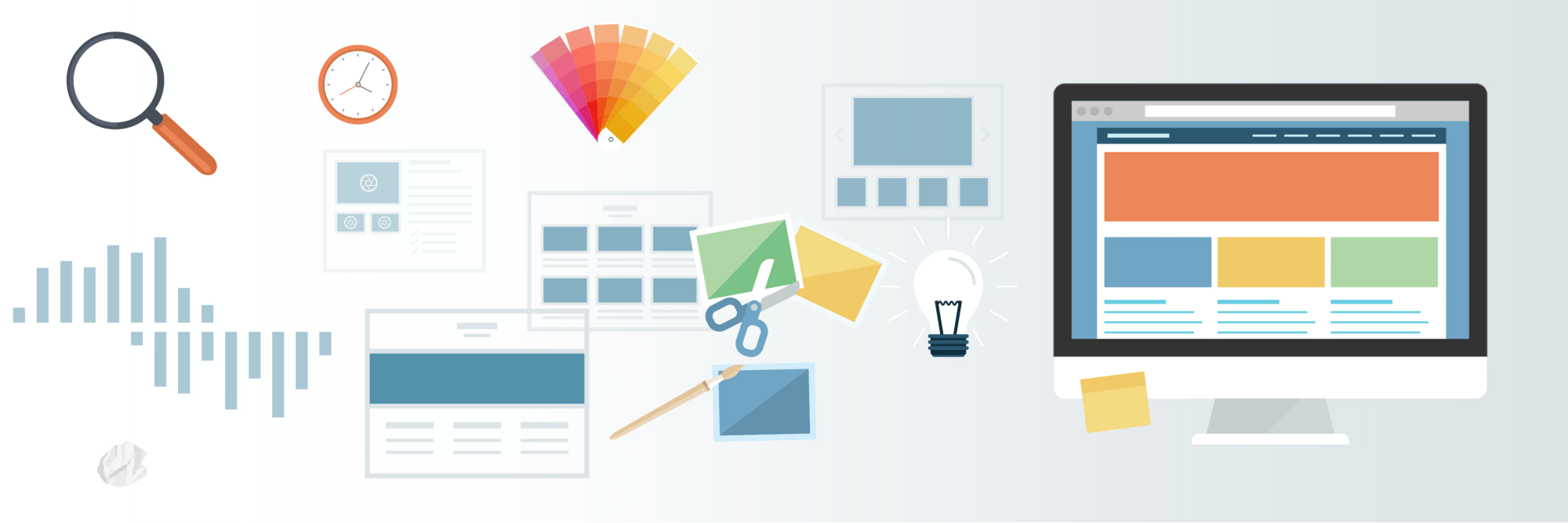We’ve come a long way since the days when computers were clunky and difficult to use. Thanks to faster processors, smarter software, and better interfaces, it’s now possible to interact with technology in a natural and intuitive way. That goes for apps, websites, and software programs as well.
Today, user-friendly interfaces are arguably one of the most crucial factors in a digital product’s success. After all, if people can’t figure out how to use an app or website, they’ll quickly move on to competitors. And that will greatly impact a business’s bottom line, which nobody wants.
In today’s digital landscape, businesses need to invest in good interface design. But what exactly constitutes a user-friendly interface? And how do you go about creating one? Let’s take a closer look at these questions and explore some key factors in designing interfaces that are both functional and easy to use.
Definition of user-friendly interfaces (UX design)
The interface, or UI, acts as a gateway between the end user and the technology. In other words, it’s the front end of a product that connects the user with its backend, which includes all the complex code and algorithms that power it. Thus, a user doesn’t need to understand the underlying web development technology to use the product.
User-friendly interfaces are essential to creating positive user experiences. In a nutshell, UI design is the process of creating an interface that is both usable and functional. It should also meet the users’ needs and the product’s business goals. Note that different types of user interfaces can cater to different target audiences.
Graphical user interface (GUI) design, for example, is focused on making software interfaces visually appealing. GUI elements include menus, buttons, and progress bars. These aim to provide contextual information while also serving as a kind of visual shorthand that users find intuitive.
User experience design is not just about making products look good. It’s also about creating an efficient experience that allows users to get the most out of a product or service. In other words, it’s about ensuring user goals are met through the effective use of the product. Doing so will result in increased sales, referrals, and overall user satisfaction.
Examples of user interface design
If you look around, you’ll see plenty of examples of great user interface design. Some of the most popular mobile apps and websites today are designed with user-friendly interfaces in mind. For example, consider Apple’s iOS operating system. Its clean, modern design makes it easy to navigate and use all the features, from building playlists to typing messages.
Android also offers a sleek and efficient UI. It enables users to find their favorite apps and create customized home screens quickly. Both Apple and Android have invested heavily in user interface design. The result is a functional interface that millions of users love.
Another example of successful UI is Microsoft’s Windows operating system. Over the years, Microsoft has made many changes to its user interface design to make it easier for users to navigate its products. However, it remains consistent across all Microsoft products. From tablets to PCs to smartphones, it provides a seamless experience for the user.
How user interfaces improve customer experience
Before we look at how to design user interfaces that enhance the customer experience, it’s helpful to understand what “customer experience” means. In a nutshell, it refers to the relationship between your customers and your brand or business. That includes all their interactions with you online or in person.
Businesses can increase customer satisfaction and loyalty by improving their overall UX. The user experience comprises many elements, including your interface’s design, usability, and functionality. By paying attention to these key factors during the UI design process, businesses can create products that their customers love and want to use regularly.
One way to think about customer experience is through the lens of the user journey. A good user interface design will make it easy to fulfill user needs and complete their desired task. That could be booking a flight, sharing photos on social media, or buying products online. Streamlining the user journey and making it as simple and intuitive as possible allows businesses to improve their customer experience and keep customers coming back for more.
Here are some common interface elements that businesses can use to improve customer experience:
Visual design: A good visual design can go a long way toward appealing to customers. Especially when it comes to making your interface look modern and professional. Strong typography, color schemes, and navigational elements are all important aspects of a successful UI.
Consider using drop-down menus, accordion-style elements, and other navigation elements.
Usability: Once your visual and functional designs are in place, you’ll need to focus on usability. Usability ensures that your interface is easy to use. Tools like usability testing, user interviews, and A/B testing can help you identify areas where users are struggling or encountering errors, allowing you to make the necessary adjustments to improve their overall experience.
You can also gather data in real-time to track user behavior and conversions. This data gives valuable insights into how customers interact with your product.
Functionality: The final piece of the puzzle is functionality, which encompasses all the technical aspects of your product or service. From load times to error messages, it’s vital to ensure that your product works properly across different platforms and devices. It should also integrate smoothly with other software.
For example, if customers interact with a touchscreen, you’ll need to ensure that all your interface elements are optimized for touchscreens. Your HTML code should be error-free. And you should test your product on all major browsers to ensure cross-browser compatibility.
Benefits of UX design in attracting new customers
There are many benefits of UX design in attracting new customers to your business or brand. Let’s look at some fundamental advantages of investing in good UI design.
Engagement
Perhaps the most obvious advantage is that a good user interface can make it easier for users to find and engage with your products or services. By making it simple and intuitive for customers to use your product, you can help them accomplish their goals quickly and easily, which can, in turn, lead to greater customer satisfaction and loyalty.
For instance, the voice user interface is quickly becoming one of the most important elements of UX design. Voice assistants like Siri and Alexa are now a part of our daily lives. As such, businesses that invest in good voice UI design can enjoy a significant competitive advantage over their competitors.
Competitiveness
Software development is notoriously competitive, and businesses that want to stay ahead of the pack must invest in good UI design. Another benefit of effective UX design is that it helps your business stay relevant in a crowded marketplace. As more businesses compete for customers’ attention, having an intuitive interface can give you a distinct edge over your competitors.
You not only have the opportunity to attract new customers but also to retain your existing customers and build long-term relationships. Try to find areas where competitors are lacking, and focus your UX design efforts on those areas to differentiate yourself from the crowd. They don’t have support for smartphones? Your app will!
Understand your users
In addition to these practical benefits, another advantage of UX design is that it can help you understand your customers on a deeper level. By closely examining user behavior and tracking customer preferences, you can gain valuable insights into what drives customer satisfaction. You’ll find out what motivates them to make purchases. This data can help you create more effective marketing campaigns and boost your bottom line.
Remember that the types of user interfaces you design will depend on your customers’ needs and your business’s goals. You must create a tailored human-computer interaction that caters to their every need.
Increase ROI
Finally, one of the essential benefits of UX design is that it can help you to increase your return on investment (ROI). It’s no secret the costs of developing and maintaining a good user interface can be high. But with the right design, you can help your business achieve better profits in the long run. Whether through increased conversion rates or higher customer retention, investing in UX design is a smart move for businesses that want to stay ahead of the curve.
For example, a checkout flow on an e-commerce website might seem simple to the average user. However, it’s a complex process involving many different elements. These include optimizing page layouts and button placement to offering multiple payment options. Without a trustworthy UI design, these checkout flows can lead to high cart abandonment rates and lower conversion rates.
Statistics and studies supporting the importance of UX design
The importance of a well-designed user interface cannot be overstated. To support this claim, let’s look at some statistics and studies that underscore the value of good design. We hope these will encourage you to consider user input when designing your own software and apps.
Forrester Research study on the impact of usability on annual profits
Forrester Research is one of the most respected research firms in the world. In 2013, they published the “Business Impact of Customer Experience” report. This report concluded that simply moving from below-average user experience to above-average UX can increase profits by more than:
$3 billion additional annual revenue for wireless carriers
$1 billion for hotels
$262 million for insurers
$227 million for retailers
Another study found a strong link between user experience and customer loyalty. This study showed that after a good user experience, customers were 15.8% less likely to switch companies and 16.6% more likely to recommend the service or product to a friend. Those customers were willing to pay 14.4% more for the same service or product.
As for when to implement a UX design strategy, the answer is simple: don’t wait. It would cost roughly $5 to fix a bad UX design problem during development but only $1 during the design stage. And the longer you wait to fix a problem, the more it will cost you down the line.
In 2016, Forrester published “The Six Steps For Justifying Better UX.” The report found that every dollar invested in UX design returns $100 in return. That’s a phenomenal ROI that clearly demonstrates the importance of investing in a user-friendly design. Similarly, a good UI increases conversion rates by up to 200%, while a good UX design can double that figure.
So if you’re serious about your business and want to stay ahead of the competition, consider investing in UX design today. Whether through improving your current interface or building an entirely new one from scratch, a well-designed UI can be one of the best things you can do for your business.
Conclusion
Overall, the importance of user-friendly interfaces is clear. Investing in good UX design can help you to create more effective marketing campaigns, boost customer retention rates, and increase your bottom line. It all comes down to understanding your user’s needs and designing an experience that caters to them.
A user-friendly interface encompasses many different elements, from the layout of your website or app to the types of features you offer. But no matter what form it takes, good UX design is essential for businesses and consumers. So if you’re serious about increasing your ROI and staying ahead of the competition, consider investing in UX design today. A consultant agency like SWARM can help you to turn your business into a success.
From prototyping and wireframes to user testing and beyond, the team at SWARM is here for you. We can help you create an intuitive, effective user experience that will keep your customers coming back for more. Please contact us today to learn more about what we can do for you.




